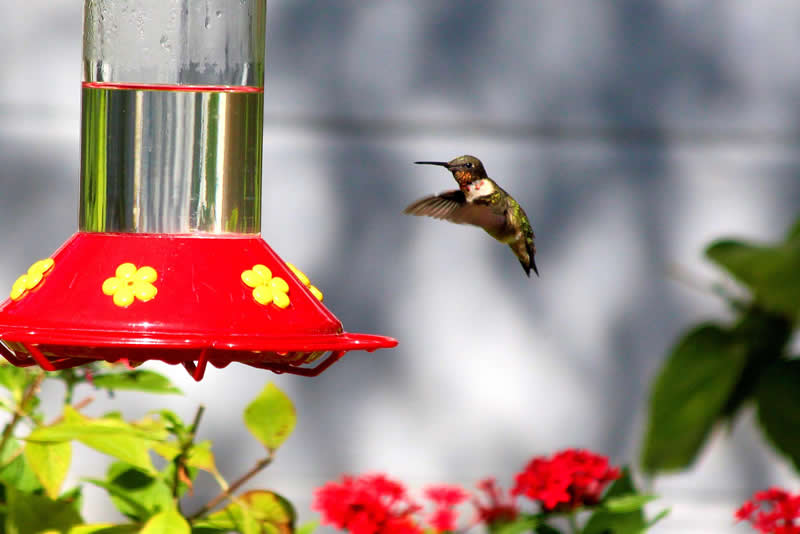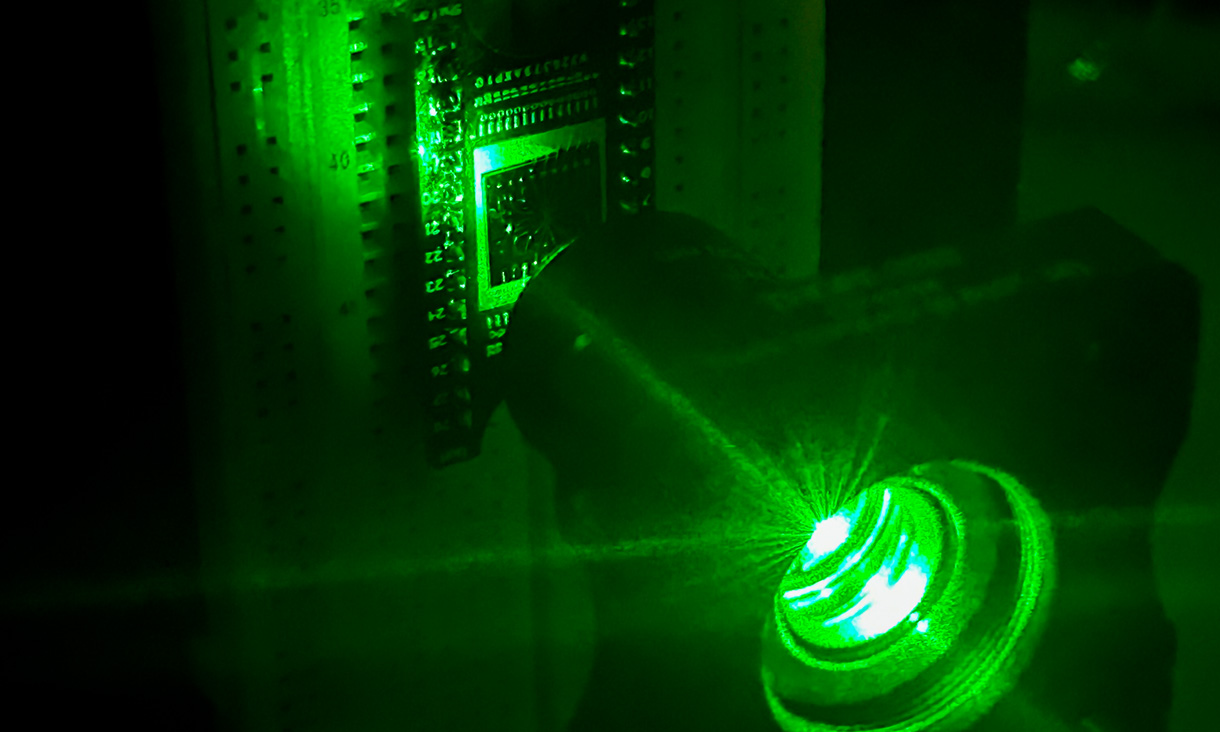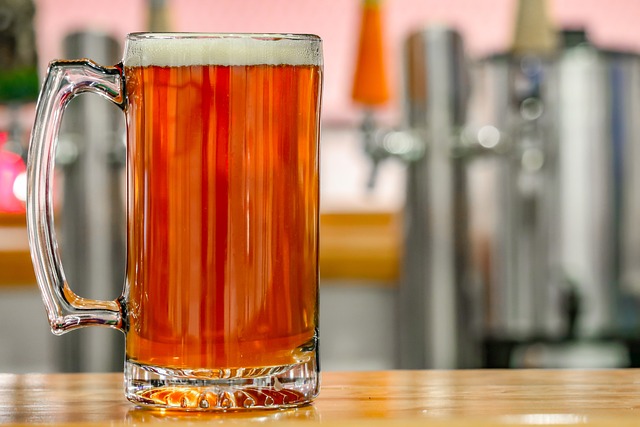While it’s true that hummingbirds are attracted to red flowers, most feeders are red in color or have little fake flowers that do the trick. These splendid little iridescent aviators are easy to attract with the right formula of sugar water and a properly designed feeder, even without the red dye. All you need to do is mix up the formula and keep the feeders cleaned and filled. Once the tiny birds make themselves at home, they’ll visit year after year.
Habits and Habitats
Even though you plan on putting out feeders, consider planting flowers that hummingbirds like to get nectar from. Of course, red flowers. But, they are attracted to orange and pink as well. Mainly, they like an open tubular shape that suits their long beak. They also need branches for perching and nesting. And, don’t forget to provide fresh water in a birdbath, fountain, or sprinkler if you can.
They move fast, flapping their wings about 50 times per second, and make a whooshing sound as they zoom past your head. They chase each other away from the feeders, which is why it’s good to provide multiple options with a bit of space between.
In times of food scarcity or when their temperature drops, hummingbirds go into a state of torpor, similar to hibernation, but short term. Their vital functions slow and they go into a deep sleep, even appearing dead. Do not disturb a bird you might find in this condition.
The Perfect Formula
Their high metabolism requires them to feed almost constantly, so your help providing food will be much appreciated. The basic formula is easy: 1/4 cup white sugar to one cup water, stirred to dissolve. Do not use honey or turbinado sugar. Hummingbirds don’t have iron in their system, so white sugar is the right kind to use. Don’t add food coloring; there is no need if the feeder looks like a red flower.
Some people cook the potion a little, which extends the “shelf life.” But, if you make smaller batches and clean the feeders more frequently, you won’t have to worry about it fermenting. It is a good idea to use filtered water, though. Some wells have iron or calcium and city water has chlorine and fluoride. If you end up with leftover sugar water, just refrigerate it until needed.
The Right Kind of Feeder
Since it is true that hummingbirds are attracted to the color red, a feeder with a bright red base will do the trick. You don’t need to buy the red food coloring in order for them to find you. But, there are a few things that will make your feeder-tending a lot less work and much more fun.
The most important feature to look for is ease of cleaning. Forget ones that have a bottle neck. You want to be able to get inside with a bottle brush or toothbrush. And, don’t get ones that are too big. Since hummingbirds are territorial, more feeders are a better option than bigger ones.
I have two styles that I love the most and have used for many years without fail. One is a red disc shape with multiple holes for feeding and a clear chamber that screws onto the base. The disc comes apart for cleaning, and the nectar chamber has a wide, screw-on opening. The other style came as a two pack and is designed to hang on a provided wire hook stuck in a hanging basket. They are small, clear tube-shaped chambers with a little red base designed for a single bird to feed at any given time. Though the base has a plastic flower that surrounds the feeding hole, it can be pulled off for cleaning. Between the two little ones and the disc feeder, one cup of food is perfect. The food should be consumed within a few days to avoid mold, or discarded for a fresh fill.
You can soak the feeders in some vinegar or water with a little bleach for a simple cleaning. Avoid perfume laden dish soaps and always rinse thoroughly before refilling.
For a few minutes of effort, you will reap hours of joyful pleasure and help a winged friend be well fed.







